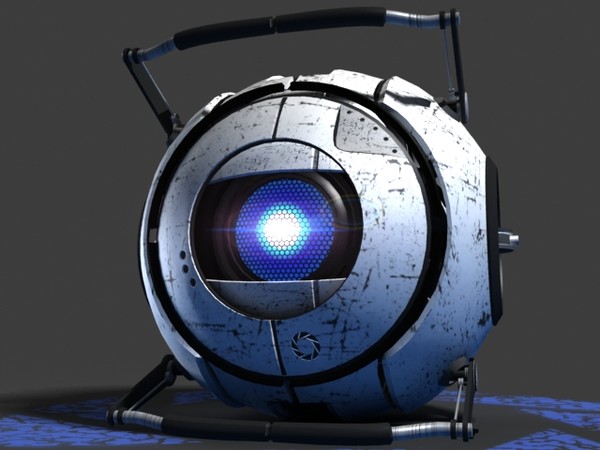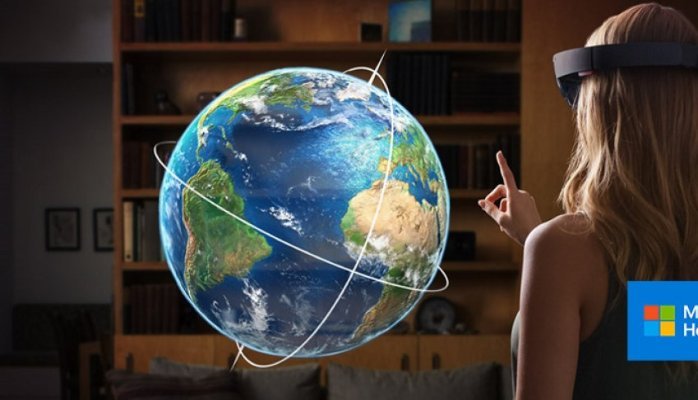Today in NYC, Microsoft ran a developer preview of the HoloLens letting folks learn hands-on. Being skeptical after the whole Google Glass experience, I didn’t think much of the product before trying it out. But boy—was I wrong.
The HoloLens demo we participated in was a short 15 minute game called “X RAY”. It started with a little spiel about the product and a quick overview on how to use it. The product employs eye tracking to focus on elements, much like a mouse, then to select an object you either air-tap with your index finger, or voice (done with Cortana). After the intro, each one of us had the distance between our eyes measured to calibrate our HoloLenses. Eventually, the release version will automatically measure this distance. We were then led to three separate rooms where the device was fashioned onto our heads.
To be completely honest, for a non-commercial product it’s pretty sleek (much more put together than the Oculus DK or DK2), for a commercial product and more specifically B2C, it’s still a bit bulky. Undoubtedly, Microsoft will make a few improvements before the HoloLens hits shelves. Once on, the eye tracking worked incredibly well, wherever I looked, the crosshairs were there. As I moved my eyes the crosshairs followed without delay. When I was on the game’s menu, I only had to air-tap to start.
How It Went

The first thing I needed to do was to map the room. The app asked me to look around in 360 degrees then the ceiling and floor as well. When mapping, the interface gave feedback as a series of orange polygons (similar to the image on the left). The woman running the demo was also mapped and I could see her figure outlined in the same orange polygons.
Once the app finished mapping my surroundings the game began. The experience was surreal: the wall in front of me broke and a flying 3D robot, reminiscent of Wheatley from Portal, came out of it. I tried to kill it but it told me “not to be alarmed” and then gave me it’s space super powers – or something like that.
GPU
GPU wise I’d equate the graphics to those of an XBOX360. From what we know about the HoloLens, it uses an Intel Cherry Trail GPU which should put it around XBOX360ish graphics if I were eyeballing, which I am. Considering the machine is a standalone – as in everything is rendered on it, it’s quite impressive.
The HoloLens is entirely wireless, apps install on it like they do on your phone (potentially tethered). According to a conversation with the development team today, Windows 10 apps will be able to run on the device. The sound is multidirectional, which is also pretty cool, I could hear holographic walls being broken as the game played.

The game itself was a simple 3D shooter where alien robots come out of the walls and you had to blast them by focusing on them with your eyes then firing with the air tap all while physically dodging their laser beam attacks, and truth be told, closer to the end, I worked up a little sweat, oh and it was Awesome!
However, during all this movement the HoloLens’ biggest flaw came out – field of view – in short it doesn’t account for peripheral vision. Whether that’s something Microsoft is planning to address is unfortunately not something that I was able to ask their developers. Is it something that completely ruins the experience? Not at all. Though it is something that detracts from the overall effect and takes a bit of time to get used to.
What We Think
Considering everything, this device is impressive and a formidable start to Microsoft’s augmented reality hardware, and I feel fortunate to have tried it this early on.

Compared to Google Glass, well, to be honest there is no comparison, this device blows Glass out of the water, and while $3k is a lot for a prototype development device, the value the HoloLens brings in terms of thinking about product in a truly augmented reality way can be justified by the price tag, on the surface, its easily worth two of Google’s Glass devices which came in a 1.5k for the developer preview.Lastly in terms of HoloLens applications, I can see this being huge for architecture, interior design, 3D modeling, and gaming. The HoloLens is a device that I definitely can’t wait to play with in more depth.
Stay ahead of groundbreaking tech here.




